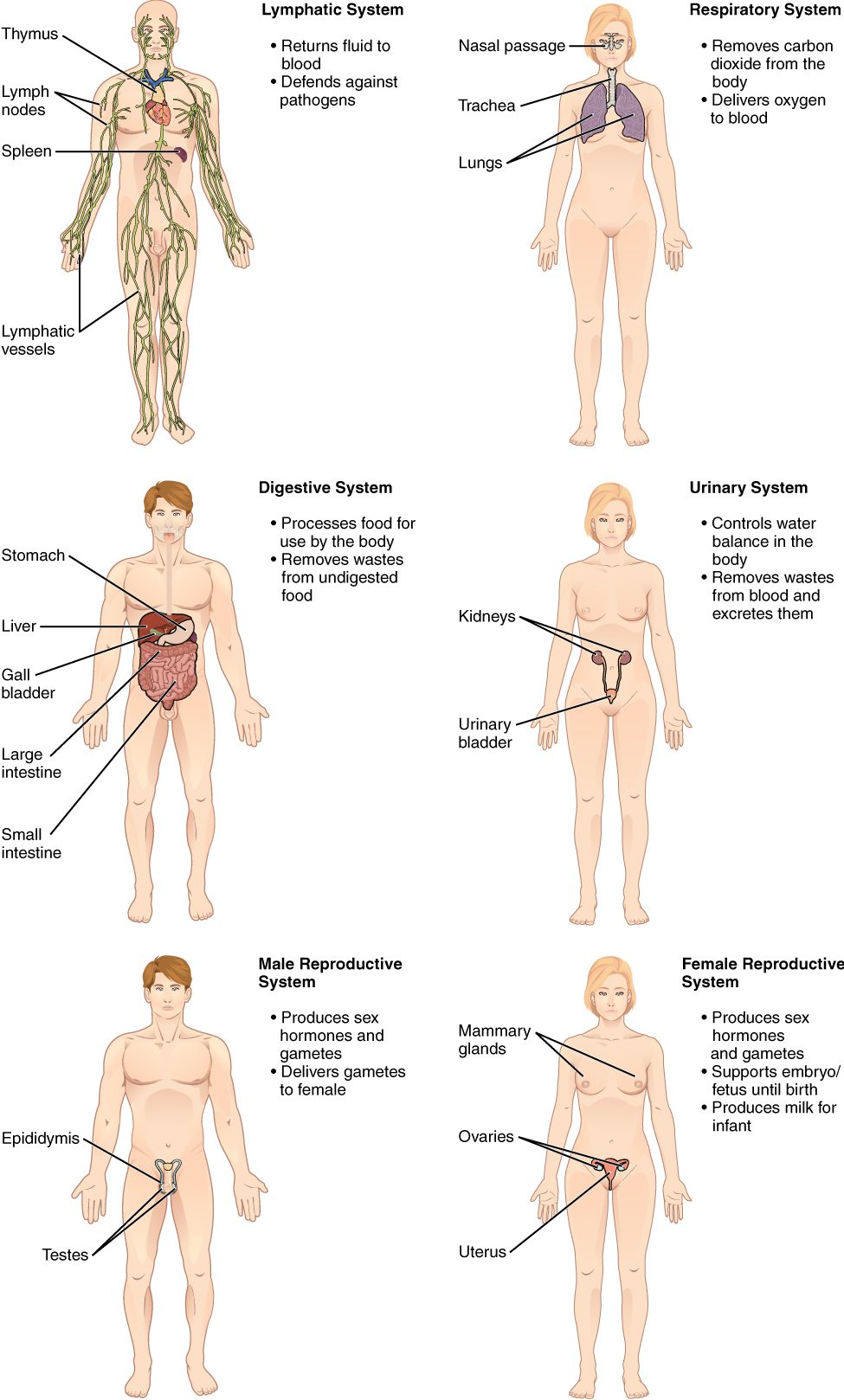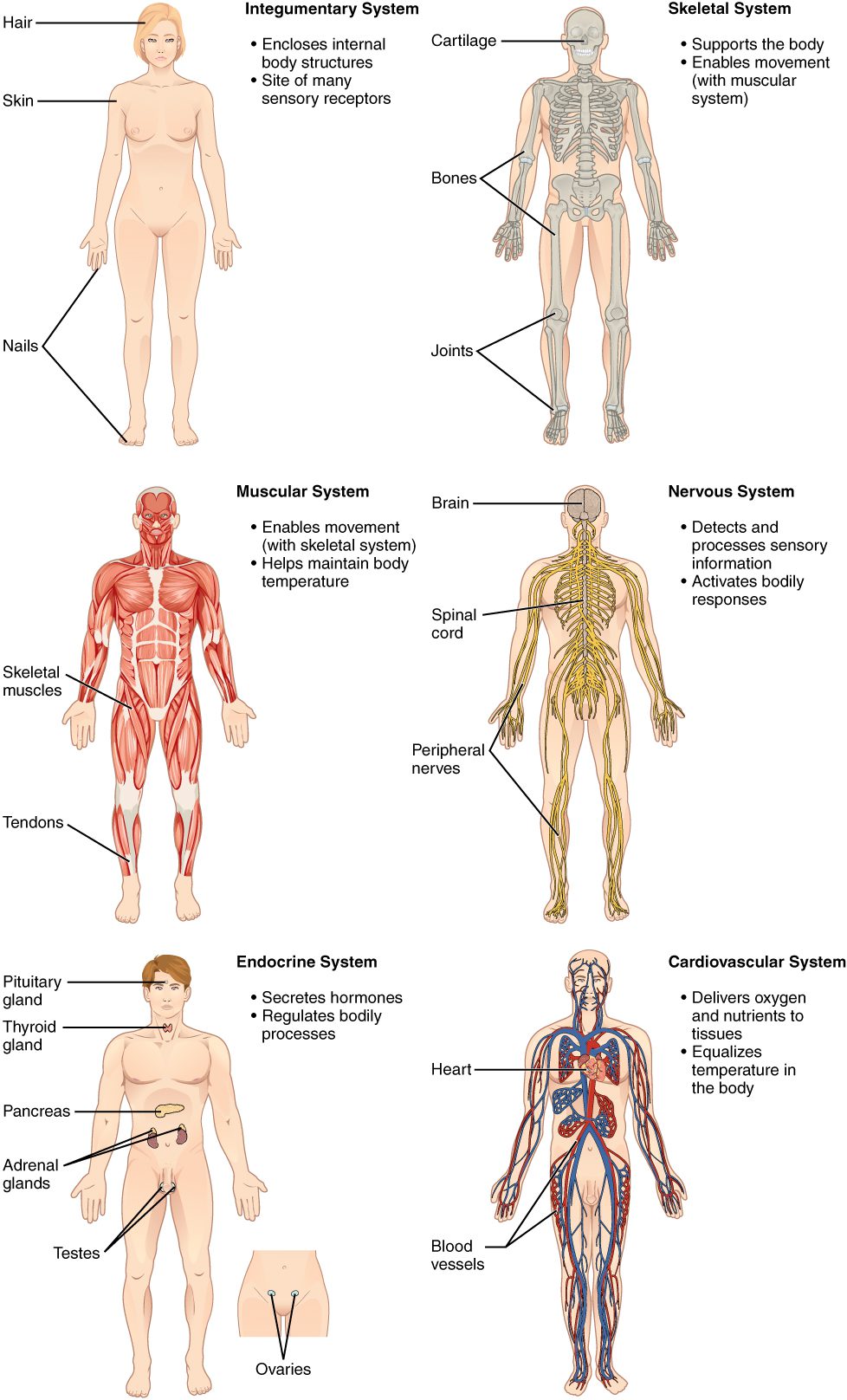Welcome to Lesson 3 on an Introduction to the Anatomy and Physiology
Homeostasis and an Introduction to Body Systems
Lesson Goals:
By the end of this lesson you will be able to:
1. Describe the process of homeostasis
2. Describe positive and negative feedback mechanisms
Vocabulary
Homeostasis-the ability of a system to maintain a steady state
Positive Feedback-system in which the stimulus and response are the same
Negative Feedback-system in which the stimulus and response are opposite
Homeostasis
Homeostasis is an important concept regarding life. Life maintains itself by virtue of what is called homeostasis.
Homeostasis refers to a system’s ability to maintain a range of values. Think of how your body maintains certain levels of substances in your blood. For example, your blood contains a sugar called glucose. Your body maintains a certain level of glucose by monitoring the glucose and then secreting certain hormones to raise or lower it. If glucose levels get too high your body responds by secreting a hormone called insulin to lower it. If glucose levels get too low then your body responds by secreting a hormone called glucagon to raise it.
Homeostasis relies on what are called feedback mechanisms. Your body has thousands of feedback systems in place that work to regulate many substances.
There are two types of feedback:
Negative Feedback is when the response is opposite to the stimulus.
Positive feedback is where the response is the same as the stimulus.
It is helpful to think of feedback in this “stimulus/response” way. A great example of feedback is a thermostat. Let’s say we set the thermostat at 70 degrees. It’s summer and hot outside and the room temperature begins to rise. Once it gets above 70 degrees the thermostat senses it and turns on the air conditioner. The result is the room cools down to below 70 degrees.
Let’s review the stimulus response part.
Stimulus = room getting warmer.
Response = turn on air conditioner to cool room down.
Can you see that the stimulus and response are opposite? This is an example of negative feedback.
Now let’s say we still have our thermostat set at 70 degrees but this time it is winter and we open the window. The temperature in the room begins to lower until it gets lower than 70 degrees. The system now responds by turning on the furnace. The room then gets warmer until the temperature gets above 70 degrees.
Again, let’s review the stimulus response part.
Stimulus = room getting colder.
Response = turn on furnace to warm room up.
Can you see that the stimulus and response are still opposite? So this is still an example of negative feedback.
Now let’s say that I wired up the thermostat the wrong way. Now when the temperature in the room rises above 70 degrees instead of turning on the air conditioner the furnace turns on and raises the room temperature. Can you see that the stimulus and response are now the same?
Stimulus = room getting warmer
Response = turn on furnace to make room even warmer
Since the stimulus and response are the same we call this positive feedback.
Body Systems
The human body consists of a series of body systems containing organs and other structures that perform specific functions. We will cover each system in detail in later lessons and this section will serve as a brief overview of each system.
Overview of Body Systems
The body systems include:
- Integumentary
- Skeletal
- Muscular
- Nervous
- Endocrine
- Lymphatic
- Immune
- Blood
- Cardiovascular
- Digestive
- Respiratory
- Urinary
- Reproductive
The integumentary system consists of the hair, skin, nails, sweat glands, and sebaceous glands. Its function is protection of the body, secretion of waste products, production of vitamin D and regulation of body temperature. The integumentary system also supports sensory receptors that send information to the nervous system.
The skeletal system consists of the bones, ligaments, and cartilage. It provides protection and support and produces red blood cells. It also stores chemical salts.
The muscular system produces movement, helps to maintain posture and produces heat.
The nervous system consists of the brain, spinal cord, and receptors. It receive sensory information detects changes and in response, stimulates muscles and glands.
The endocrine system is a series of glands that secrete hormones. The endocrine system contains many feedback systems to help maintain homeostasis.
The lymphatic system includes the lymph vessels, lymph nodes, thymus and spleen. The function of the lymphatic system is to return blood to tissues as well as transport some absorbed food molecules and defend against infection.
The immune system consists of cells and antibodies that help the body to fight off pathogens. Some organs associated with the immune system are the thymus and spleen.
The blood is a fluid system that contains cells and plasma. These structures work to transport oxygen and carbon dioxide along with water, electrolytes, hormones, carbohydrates, fats and proteins and wastes.
The cardiovascular system includes the heart, arteries, capillaries and veins. The function of the cardiovascular system is to transport blood.
The respiratory consists of the nasal cavity, lungs, pharynx, larynx, trachea, and bronchi. The respiratory system supplies the body with oxygen and eliminates carbon dioxide.
The digestive system includes:
- Mouth
- Tongue
- Teeth
- Salivary glands
- Pharynx
- Esophagus
- Liver
- Gallbladder
- Pancreas
- Intestines
The function of the digestive system is to receive, break-down, and absorb food. It also eliminates wastes.
The urinary system includes the:
- Kidneys
- Ureters
- Urinary bladder
- Urethra
The function of the urinary system is to remove wastes, maintain water and electrolyte balance, and store and transport urine.
The reproductive system passes genetic information down to future generations as well as produce hormones that help the body to mature.
Study the body systems in the images below:



